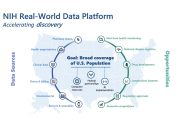
The U.S. Centers for Disease Control and Prevention (CDC) announced on Monday it is shortening the recommended quarantine time for Americans who contract COVID-19 from 10 days to five days if they are asymptomatic, regardless of vaccination status. If those individuals remain asymptomatic after five days, it is recommended that they can leave isolation and wear masks in public for another five days. The new guidance underscores the mild nature of the Omicron variant and undermines the need for the strict COVID protocols being reimplemented across the globe.
The guidance says that individuals who do have COVID symptoms may still leave quarantine after five days if the symptoms are resolving by that time.
The agency has also shortened the time that individuals who have had close contact with COVID-19 patients need to quarantine.
“For people who are unvaccinated or are more than six months out from their second mRNA dose (or more than 2 months after the J&J vaccine) and not yet boosted, CDC now recommends quarantine for 5 days followed by strict mask use for an additional 5 days,” the agency’s website reads.
“Alternatively, if a 5-day quarantine is not feasible, it is imperative that an exposed person wear a well-fitting mask at all times when around others for 10 days after exposure,” the guidance continues.
Individuals who have received a booster do not need to quarantine, according to the new guidance, but should continue to wear a mask for 10 days after exposure.
The CDC attributes the guidance change to the surge of Omicron cases across the United States, accounting for 73 percent of all cases in the United States, and as much as 90 percent of COVID cases in some parts of the U.S.
More than 1,000 fights were cancelled over the holiday due to a sharp rise in Omicron cases plaguing airline staff, compelling an airline trade group to ask the CDC in a December 23 letter to shorten the recommended isolation period for fully vaccinated employees who test positive to a maximum of five days from 10 days before they can return with a negative test.
“Swift and safe adjustments by the C.D.C. would alleviate at least some of the staffing pressures and set up airlines to help millions of travelers returning from their holidays,” said Derek Dombrowski, spokesman for JetBlue, in support of the proposed changes.
The new guidance followed just four days later.
CDC Director Rochelle Walensky told the Associated Press the new guidance is meant to allow society to continue to function in the wake of the weaker strain, which has caused just one death in the United States so far.
“Not all of those cases are going to be severe. In fact, many are going to be asymptomatic,” she told the AP. “We want to make sure there is a mechanism by which we can safely continue to keep society functioning while following the science.”
In fact, a leaked study from the U.K. Health Security Agency revealed individuals who contract Omicron are less likely to become severely ill from the virus compared to the previous strains, The Epoch Times reported. An analysis from Imperial College London also found Omicron to be a much milder strain.
The Epoch Times reports that Omicron is resulting in significantly less hospitalizations than previous strains, with 64,000 Americans hospitalized on Christmas Day, a decrease from the 98,000 hospitalized on September 1 with the Delta surge and the 133,000 who were hospitalized on January 14.
The U.K. Health Security Agency reported on December 23 that a person infected with Omicron is 70 percent less likely to be admitted to the hospital than an individual with Delta.
According to Ashish K. Jha, dean of Brown University and a former Harvard professor, the highly contagious but mild nature of Omicron should prompt health experts to stop using positive cases as a “major metric” of the pandemic.
“For two years, infections always preceded hospitalizations which preceded deaths, so you could look at infections and know what was coming,” Jha told ABC’s This Week on Sunday. “Omicron changes that. This is the shift we’ve been waiting for in many ways.”
Jha contends U.S. officials need to “focus on hospitalizations and deaths now.”
Experts have suggested Omicron may be the variant to end the pandemic, comparing it to the variant that ended the 1918 Spanish flu.
“We had three waves and the Spanish Flu pandemic lasted for almost two years,” explained Dr. Sandeep Budhiraja, group medical director of Max Healthcare and senior director at the Institute of Internal Medicine. “Then it started abating and became endemic. This happened due to a muted strain like the Omicron which probably was less virulent and more infectious and that actually ultimately brought the pandemic to an end.”
And yet, in spite of this evidence, administrations in Wales, Scotland, and Northern Ireland introduced new COVID restrictions on December 26 that enforce social distancing, limited capacity, and business closures.
California, Hawaii, Illinois, New York, New Mexico, Oregon, and Nevada have reinstated universal indoor mask mandates as Omicron spreads. Connecticut implemented a mask mandate for only unvaccinated individuals, even as studies continue to show that vaccines are ineffective against the Omicron variant. Washington has gone so far as to require masks while outdoors at events attended by more than 500 people.
Earlier this month, outgoing New York City Mayor Bill de Blasio announced a first-in-the-nation vaccination mandate for workers and customers at indoor dining, entertainment and performance venues, and fitness centers. The city also requires children ages 5-11 to show proof of one vaccination dose for those venues as well.
Additionally, school districts across the country are returning to remote learning.
“We’re going to see a return, basically, to a good portion of how things looked last year,” Dan Domenech, executive director of the School Superintendents Association, opined last week.
Schools in Newark, New Jersey, New York City, and Erie, Pennsylvania, are going virtual because of rising COVID cases, prompting even USA Today to note the negative ramifications virtual learning has had on students academically, mentally, and physically.
“The problem,” reported USA Today, “Virtual learning doesn’t work well academically, socially or emotionally for many students, particularly those who lack safe, supportive households and steady internet connections.”
Domenech claims schools want to stay open, but it has been “a logistical nightmare.”
Perhaps the latest guidance from the CDC will alleviate some of the logistical issues and provide the assurances needed for individuals to let go of the culture of fear that has permeated the last two years.
The new guidance comes just days after the CDC reduced its recommendation for healthcare workers to stay out of work for 10 days if they test positive for COVID. If healthcare workers show no symptoms and produce a negative test, they can go back after seven days.






